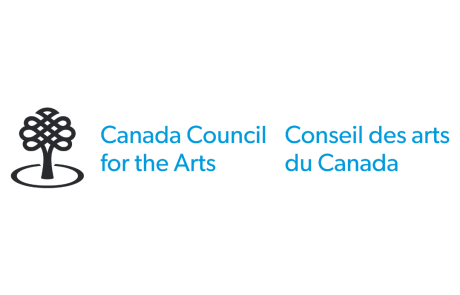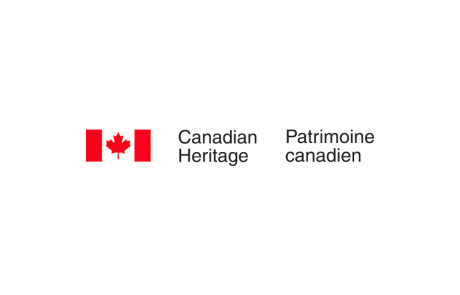Cosmologies: Anything that Exists has a Beginning
by Daina Warren
This multi-media group exhibition, held at Centre A: Vancouver International Centre for Contemporary art from July 4 – August 8, 2009, deals with complex cultural systems created by four individual artists (Jason Baerg, Dana Claxton, Lewis deSoto, Richard Tawhanga Kereopa) from various Indigenous cultures. These systems of knowing the world display a diversity of cosmological interests through reflection on beliefs about the creation of the natural world, reflect spiritual practices, or show the different cultural applications based in time and space philosophies. Other systems provide access to the creator – all of which can be combined into a personal way of being or intervening space, adding to the understanding of self.
———————————————————————————————————————————————————————-
My initial interest in cosmologies began with listening to stories of how Cree people perceive the world – stories that describe the spiritual abilities of medicine men and women; personal accounts that tell of those who listen to the sound of thunder and interpret messages in the rumbling echoes; or the passing of cultural knowledge that guides our ceremonies so spirit ancestors recognize men and women who need healing work. These are all various cosmologies that connect Cree people to the spirit world, the natural environment or other living beings. Even though the traditional territories of my elders have changed quite significantly over the years, our cultural knowledge systems still express the ways in which we position ourselves in relation to the Creator’s world. However, I have also witnessed how my community integrates non-Native religions, modern technologies, and influences from other cultures into a Native worldview.
A few years back, I was attending an elder’s funeral on my reserve and there I witnessed the cultural complexities of someone’s passing ceremony as it was interwoven with the younger generation’s interest in mobile phones, computers, and video games. An interesting metaphor was occurring between the use of sweet grass and cell phones. The cultural practice of using sweet grass maintained our connection to the spirit world by taking our thoughts and prayers to the Creator, and thus defined a sacred space within our physical environment. Yet, the social practice of communicating with cell phones and text messages assisted in the personal bonding in which our grief was conveyed, and released. It is in such intersections of cultures that I have become aware of how considerably complex the conditions are in which Aboriginal people negotiate their day-to-day experiences. This complexity is not just present in the integration of modern and digital worlds with the traditional, which many Aboriginal artists utilize. It is more about how underlying cultural knowledge systems inform their art practices, and the ways in which these knowledge bases mix with any number of situations to produce a project.
This complex of cultural knowledge and urban sensibilities reflect multiple perspectives, as is evident in the works of four artists in Cosmologies – anything that exists has a beginning. Through the unique and multiple worldviews that are grounded in each of these projects, it is evident that there is a need to provide space for these conceptual understandings, which are based in various Indigenous cultures and address the theoretical problems and assumptions that Aboriginal cultures are now “pan-Indian.” Various Aboriginal people’s beliefs are grounded in long held traditions but are always constantly being renegotiated with various ways of seeing and understanding the world. Such as Richard Kereopa’s work that deconstructs his own Maori cultural identities in relation to a global culture; or Dana Claxton’s video of a mesmerizing account of spirit work and a powerful Lakota medicine woman; to that of the installation by Lewis deSoto, of the Cahuilla Nation, which speaks to his interests in Buddhist cosmologies through the understanding of self and desire; and Jason Baerg’s project is grounded in his Cree ancestry combined into a worldview which informs his multi-disciplinary approach of contemporary painting and a digital virtual world.
Baerg’s boldly colored canvases visually disrupt the white wall spaces of an expansive gallery. Correlated with this series of paintings is a digital projection of a virtual space, displaying an aerial view that soars through an animated landscape. One can see that Baerg has carefully constructed this digital world around the same colorful images that are on display in the exhibition. These large paintings are based upon the four sacred colors that speak to Baerg’s cultural knowledge of the medicine wheel – red, yellow, black, and white. Each painting is layered with various sun and starbursts as well as abstract and boldly colored forms that reflect the influences of Montreal artist Guido Molinari.(1) These modernist and abstract existential principles coalesce with the ideologies of the medicine wheel, creating compositions that seem at first glance to be familiar in terms of western art practices by his use of modernist form lines.(2) Yet, the paintings speak to his First Nations’ perspective as is evident in his consideration and layering of color palettes. The cosmology of the medicine wheel is important as it stands for several conceptual understandings of the world, which are broadly understood by various Aboriginal groups as follows: the four races of humanity; the four directions, the four elements, the four seasons, and the four sacred animals – butterfly, frog, eagle and turtle.(3) The representation of a turtle provides a link between Baerg’s digital virtual world and his cultural cosmology of the Cree culture.
Baerg’s cosmological world on display is a DVD video capture of the original website project, The Plain Truth, that was co-produced with Urban Shaman Gallery in Winnipeg, in 2008.(4) In response to his educational experiences, Baerg realized there was a need to develop his visual arts practice, and thus expanded this series of works further by creating a digital composition that articulated his visioning of time and space. These two-dimensional surfaces evolved into both light boxes and a virtual online “alternate universe.”(5) In this universe, the viewer participates in a fly-through exploration of a floating island in the sky, which houses images of the multi-coloured paintings within a lush natural environment. While the viewer explores the four rocky, grass-covered areas, we see the paintings in finer detail. The viewer ascends to this other world through the guidance of a turtle entity. This detail is interesting to note because of several interpretations about turtle spirits and why they are important. The turtle is based in Native oral histories as the “being” who created the world on its back; it is also the term that is commonly used by Aboriginal communities to refer to the North American continent, known as Turtle Island; and is the connecting factor to Baerg’s floating “island” in the sky. The turtle is a point of access for locating Baerg’s understanding of the physical world. But, more importantly it is another way for the artist to connect to the teachings of the medicine wheel, thereby cohesively visioning his own constructs of time and space.
Adjacent to Baerg’s screen is Dana Claxton’s project on a second flat screen monitor. A set of headphones near-by provides the only access to sound in Claxton’s piece her eyes have seen many worlds. A black and white film captures the artist’s face in slow motion. Throughout most of the video, she is looking downward, concentrating on something outside of our vision. At the same time, her lips are barely moving and are out of sync with the words being spoken. By engaging the listener in her story telling though the headphones, one immediately feels a personal intimacy with the work. As the story telling nears its end, she gradually meets the viewer’s gaze. Large dark shadows permeate most of the screen and a long, thin slice of bright light illuminates sections of Claxton’s face and hair.
Dana Claxton is from the Lakota nation and her video speaks to her spirit knowledge about “Wakan,” a Lakota spiritual concept. It can be broken into two syllables: “wa,” which means “anything which is something“ and “kan,” which means “anything with which something can be done.” A “Wakan” person is one who is wise and has the unique capabilities to communicate with the spirit world. This person is someone who can do strange things, physically and emotionally, manifests events that are not logically plausible, and is a human entity that bridges the living world with the spirit world through their actions.(6) In Claxton’s video, the artist refers to a Wakan woman, a medicine woman who has strong spiritual powers that can heal the sick or dying through her physical touch and through prayer:
“…it is told that a child was very ill, a mysterious sickness, a deep pain
they took him to see the woman
she placed a robe down for the child to lay in the centre
she opened a bundle and began to sing
then from her bundle she took red paint and rubbed it on her hands
she continued to sing, she stayed with the child for four days…
…it is told that an old person wandered off into the trees and was lost
the woman went to the forest to find them
she returned carrying the old person in her arms
their body was partially shredded
she doctored the old person
the old person had deep scars
the old person lived for many, many years and every day brought food to this woman…”(7)
At first we are unsure if this Claxton’s story, or another’s? Is she the medicine woman, or is this a re-enactment? In conversation with the artist, Claxton revealed that this mysterious “Wakan woman” is actually fictional but the artist based this character on stories she has heard while attending Sun Dance ceremonies. This medicine woman is an amalgamation of spiritual workers – a character that has been built out of stories from people who have witnessed strange events from their own medicine people. The spirit workers hold incredible significance within Lakota communities because they provide the connection to the spirit world, and they also are the connection to the physical universe and the Lakota sun cosmologies. In terms of sky knowledge, Skan is a concept that Lakota people are connected to and it is believed that everything one needs to know is in the sky. Both Wakan and Skan are the connecting energies for Lakota people to relate to their physical and spiritual environments.
A different, but connecting force, for Richard Tawhanga Kereopa, is “the sacred thread.” In a laptop installation a conceptual conversation is taking place between two computers placed in relation to each other on a grey couch. One screen displays the artist’s hands silently weaving pieces of paper into a simple basket design. Throughout this demonstration, Kereopa uses subtitles to tell stories from his youth and his community, juxtaposing cultures between the subtitles of personal experience with the traditional act of weaving. For Kereopa, continuing the weaving tradition is important to his identity as a Maori person and to his practice as an artist. Weaving is a cultural metaphor that is central to Maori worldviews as it represents and honors familial lineage. This traditional act not only links Maori people to each other through immediate family relations but stands for a larger cosmological visioning that links all Maori generations to the ‘Atua,’ who, by accounts from the sacred stories, were the first human beings to arrive with creation. It is this same cosmological energy that is the connecting force every Maori person has to other living beings on the planet, thereby positioning the people in relation to their environment and to each other:(8)
“The sacred thread is what Maori weavers refer to it as. The sacred thread is a metaphor for the genealogical line that passes from one generation to the next and in weaving it is the first thread that all others are tied to when beginning a cloak. In my practice, I tend to take an aspect of what I am working on, whether it be material or concept, and use it in developing the next. I’m very aware that my work has a whakapapa – a genealogy.(9)
The second laptop displays Kereopa narrating personal experiences in relation to his queer identity; this narration is combined with various recorded live actions. The artist is dressed in 1970’s disco drag, silver lips are outlined by Maori tattoo line-work; Afro wigs and bright mini-dresses embellish this persona. Each recorded action is back dropped with scenery and locations around Kereopa’s village. As we view this second display, there is certain poignancy to the image of a drag queen that has inserted her self into the rich natural beauty of beaches and forests. At first glance, it seems that she has been dislocated from the presumed context of a party festival or nightclub. But then the image becomes distressing, moving the viewer to reconsider the first response.
It may not be immediately clear that her “in-your-face” sexuality is meant to raise questions about a cultural spiritual worker who has been reduced to a spectacle within her own environment. Displayed through a medium associated with the technology of laptops and Internet this work, at once speaks to the artist’s queer identity within new media and global constructs of online communities. The work is further layered by the artist’s response to the fact that queer roles in traditional Maori culture had incredible significance within the community but these spiritual positions are now disregarded due to historical colonial influences. Similar in intent to that of Jason Baerg’s multi-media project, both artists intervene the public domain of the Internet and cyberspace communities by introducing Aboriginal philosophies into the this global web of cultures. The artists place value on visioning conceptual space from an Aboriginal perspective, and capitalize on incorporating new knowledge systems. These combined artistic and cultural expressions access the world on a global scale. Stories and ideas that can be located in specific cultures now have a worldwide audience, and provide new ways to explore ideas and investigate different ways of seeing the world.
Lewis deSoto is from the Cahuilla nation and is currently living in California. A large part of his artistic practice is based within his understanding of his traditional desert territories in the US, knowledge located in his Cahuilla culture, new media and popular cultural influences, and Buddhist philosophy. The piece at Centre A stands out from the other visual arts projects both in physical size and content. Half of the gallery floor area is covered in brown cocoa bean husks. A wooden walkway strikes a path through the shells towards one of the large gallery walls and there is a strong aroma of bitter chocolate in the air. At the end of the path, the viewer is confronted by an arched wall space covered in gold leafing. The tactile nature of earth when transported indoors allows the viewer an immediate connection to land and environment yet one is constantly aware of the tantalizing odor of chocolate hanging in the air:
“The piece was based on an experience I had while meditating at a Zen Center in LA. I used to go in the late afternoon and there would be an ice cream truck that went down the street; when I heard it, I was overcome with hunger and memories about ice cream, my childhood, etc., but during the meditation experience, even before the truck got past the building, I had forgotten the desire and was back meditating.” (10)
Though one is probably not aware of it, she or he is moving through and moving past personal desires in a metaphorical reaching for enlightenment. The artist offers the public an opportunity to realize their position in relation to personal actions motivated by desire – which is presented to the audience through the physical presence of cocoa and mulch. As the smells and perhaps personal memories alert the senses, desire arises in relation to individual experience but also reveal deeper human characteristics. This spiritual concept is fraught with paradoxes, for one, its not only how and what we desire that have incredible implications on our minds and bodies. But just as importantly, the act of pulling away from one’s desire can also be as harmful to our spiritual awakening if one is not aware of the push & pull paradox happening simultaneously in our mental and physical states. Why is it important to provide space for that awareness? Though there is a level of morality that is inline with these Buddhist philosophies, there is also something larger at work here, which is the accessing the spiritual through the body and metal understanding of self to personally connect with and take part of a functioning cohesive spiritual system. Thereby if each individual understands their space in the world and takes responsibility for their immediate actions, each individual is contributing his or her part to an immediate enlightened world for everyone to benefit from.
Just as deSoto uses soil as a visual representation, the overall theme of the show can be viewed as something similar to that of a ground surface – a possible root system. Each artistic piece is a journey through the complexities of worldviews and cultural identities, this journey or experience displaying the complex intersections of gaps and surfaces that have been growing and moving throughout time and space. Or can these ideas be visualized as something similar to that of a web of cyberspace or the mobile cell phone world? These knowledge systems are larger and older understandings of the world, understandings that have been growing and developing with Indigenous cultures. The curatorial intent is to move beyond such reductive ideas around another person’s culture, to move past concepts of new age philosophies, to deconstruct those assumptions that Aboriginal cultures are morphing into one general Indigenous worldview. Each of these artistic projects reflect that amalgamation and adaption of new ideas, each work providing a brief visual representation to incredibly larger concepts within these cultural worldviews, so large one may never really grasp how another community interprets their understanding of the world. There is only artistic intention, encapsulating those moments of cultural knowledge that need space to display a personal way of walking in this world, being in this world, providing another way of seeing this world.
1. Kathleen Ash-Milby, Storm Spirits – Jason Baerg The Plain Truth, November 20, 2007.
2. Globe and Mail, Canadian abstract painter Guido Molinari dies, February 22, 2004.
3. Sun Bear and Wabun, The Medicine Wheel Earth Astrology (New York: Prentice Hall Press), 2.
4. The Plain Truth: The RYBW Series, http://www.stormspirits.ca
5. Kathleen Ash-Milby, Storm Spirits – Jason Baerg The Plain Truth, November 20, 2007.
6. Raymond J. Demallie and Elaine A. Jahner, Lakota Belief and Ritual, page 68-69
7. Dialogue from “her eyes have seen many worlds,” Dana Claxton, 2005
8. “The atua are ancestors of ongoing influence with power over particular domains.” Tania M. Ka’ai, John C. Moorefield, Michael P. J. Reilly, Sharon Mosley. Kit e Whaiao An Introduction to Maori Culture and Society (New Zealand: Pearson Educations New Zealand Limited, 2004), 13.
9. Personal message from Richard Kereopa, January 2009.
10. Personal message from Lewis deSoto, February 2009.
 Daina Warren is a member of the Montana Cree Nation in Maskwacis (Bear Hills), Alberta. In 2000, she was awarded Canada Council’s Assistance to Aboriginal Curators for Residencies in the Visual Arts program to work with grunt gallery in Vancouver. This opportunity led to a permanent position with the artist-run centre as an associate curator and administrator until 2009. Warren completed the Canada Council’s Aboriginal Curatorial Residency at the National Gallery of Canada in Ottawa, Ontario, where she curated the group exhibition, “Don’t Stop Me Now”. She has received her Bachelor’s degree in 2003, graduating from the Emily Carr University of Art and Design. Warren graduated from a Masters in Art History program, completing the Critical and Curatorial Studies from the University of British Columbia (2012). Warren was awarded the 2015 Emily Award from Emily Carr University and was selected as one of six Indigenous women curators as part of the Canada Council for the Arts Delegation to participate in the International First Nations Curators Exchange that took place in Australia (2015), New Zealand (2016), and Canada (2017). She is currently the Director of Urban Shaman Contemporary Aboriginal Art in Winnipeg, Manitoba.
Daina Warren is a member of the Montana Cree Nation in Maskwacis (Bear Hills), Alberta. In 2000, she was awarded Canada Council’s Assistance to Aboriginal Curators for Residencies in the Visual Arts program to work with grunt gallery in Vancouver. This opportunity led to a permanent position with the artist-run centre as an associate curator and administrator until 2009. Warren completed the Canada Council’s Aboriginal Curatorial Residency at the National Gallery of Canada in Ottawa, Ontario, where she curated the group exhibition, “Don’t Stop Me Now”. She has received her Bachelor’s degree in 2003, graduating from the Emily Carr University of Art and Design. Warren graduated from a Masters in Art History program, completing the Critical and Curatorial Studies from the University of British Columbia (2012). Warren was awarded the 2015 Emily Award from Emily Carr University and was selected as one of six Indigenous women curators as part of the Canada Council for the Arts Delegation to participate in the International First Nations Curators Exchange that took place in Australia (2015), New Zealand (2016), and Canada (2017). She is currently the Director of Urban Shaman Contemporary Aboriginal Art in Winnipeg, Manitoba.










